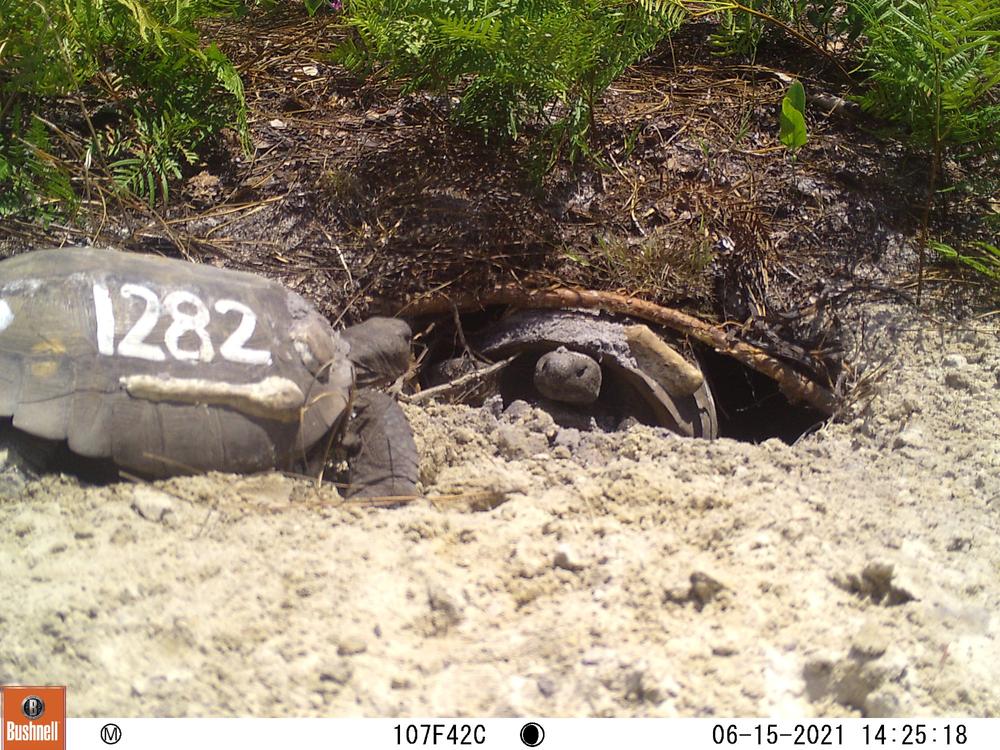Credit: University of Georgia Coastal Ecology Lab
Section Branding
Header Content
Tortoises Can Talk? Listen To One's Romantic Chitchat With Potential Mate In Georgia
Primary Content
Tiny sounds heard for centuries in the Deep South have been traced to their origin — and the source will likely come as a surprise to some.
Turns out gopher tortoises can talk ... sort of ... and their voice sounds a lot like a heavy smoker clearing his throat.
A brief recording of their “vocalizations” was shared online this week by Georgia’s Coastal Ecology Lab, which has been spying on tortoises in the Coastal Plain and recording their activities.
The recording is of two tortoises, engaged in romantic chitchat while courting, the lab reported in a Facebook post.
“Gopher tortoises, like many other species of turtles and tortoises, use vocalizations to communicate with each other,” the lab said.
“This research has revealed that tortoises are very vocal and frequently communicate, greet one another at the entrance to their burrows, and have extensive exchanges during mating events. It makes sense that creatures with such a high level of social interaction would need verbal dialogue.”
Gopher tortoises are the only tortoise native to the Southeastern U.S., and they are seldom seen due to being in their burrows a lot, according to the Savannah River Ecology Laboratory in Georgia. They live up to 50 years and grow to just over a foot in length, the lab reports.

Research on their vocal abilities is so new that experts still aren’t sure of the circumstances that compel gopher tortoises to start a conversation.
“Tortoise interactions tend to take place when people are not present and occur on the lower end of the human auditory range. Therefore, we need special technology to hear them,” the lab said.
The gopher tortoise is a threatened species, and the Coastal Ecology Lab is trying to intervene in their demise by relocating endangered tortoises off mineral mining sites. Among the things researchers are watching is how these “translocated” tortoises are interacting with their new neighbors on conservation lands, officials said.
This story comes to GPB through a reporting partnership with The Telegraph

